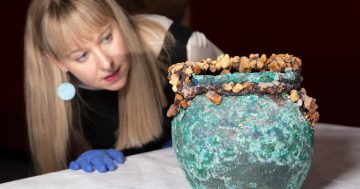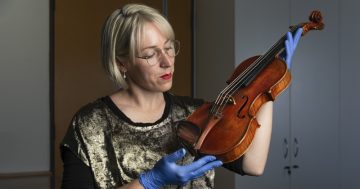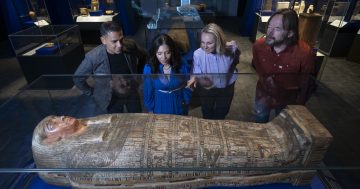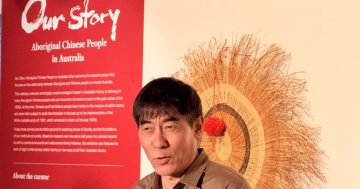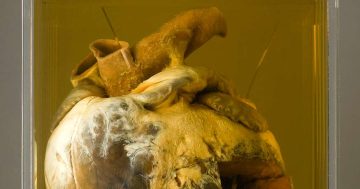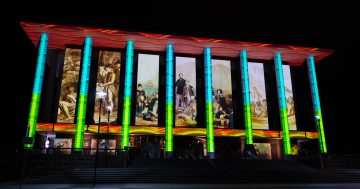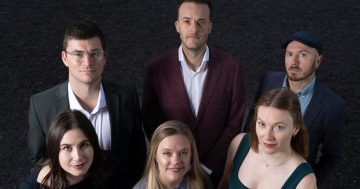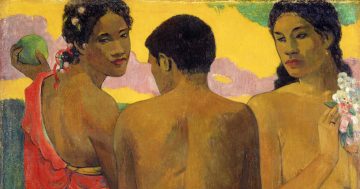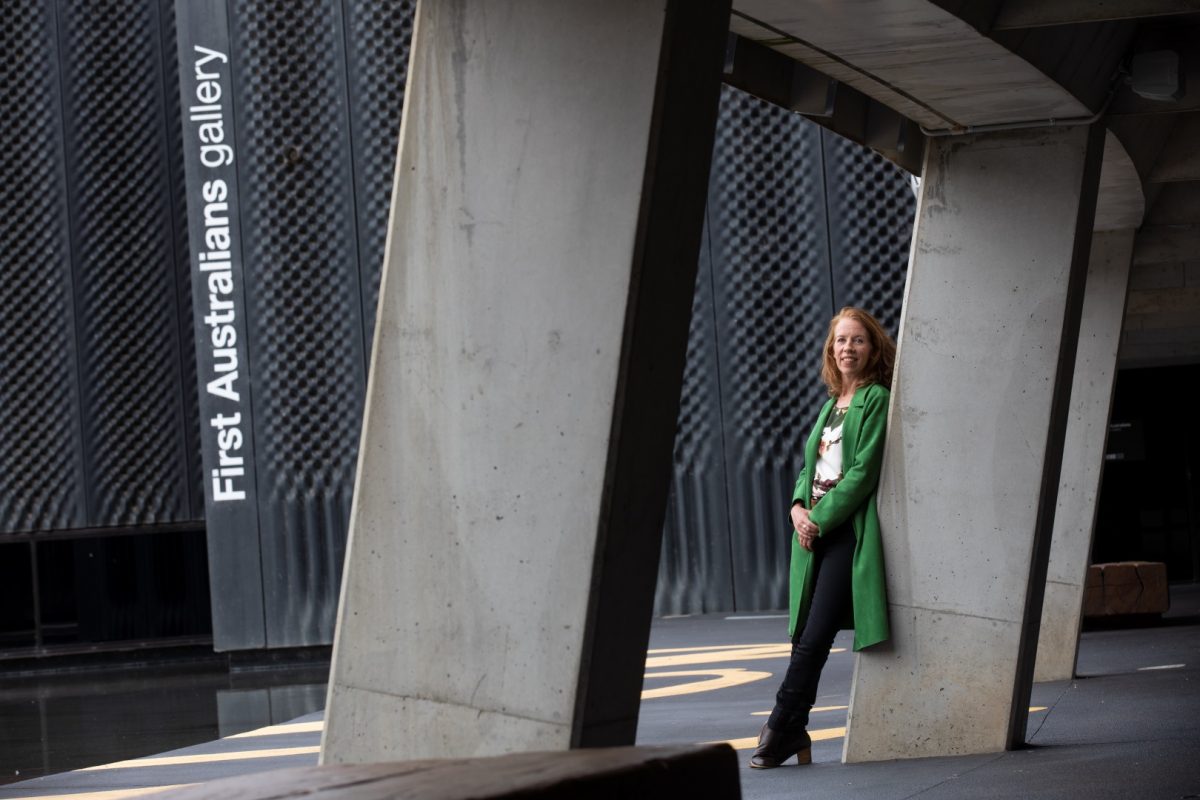
Genevieve Lacey with her Breathing Space sound installation in the National Museum’s Garden of Dreams. Photo: NMA.
Exhibitions are coming out of their COVID shells, taking a big breath, and going loud and proud to show their audiences that creativity doesn’t always have to be confined inside the walls of a gallery.
The National Museum of Australia (NMA) is doing just that with its new permanent exhibition, Breathing Space, in partnership with musician and composer Genevieve Lacey.
But you won’t find it in one of the prime pieces of exhibition real estate inside. This sound installation comprises several musical works and is growing its audience base in the Museum’s Garden of Australian Dreams (GOAD) outside.
Director of the NMA Dr Mathew Trinca described the new work as transformative and illustrated how important it was for the Museum to support and work with performing artists from all genres.
“This innovative sound installation will transform the Garden of Australian Dreams, bringing music, language and the sounds of country into our central garden space,” he said.
“It will strengthen the connections between the natural and the built, people and place, listening and learning.
“It’s been a burning ambition to reimagine the Garden of Australian Dreams for a long time and after seeing the work of Genevieve Lacey, an internationally renowned musician and composer, specifically with Sydney Living Museum and Vaucluse House, to bring garden spaces to life, the Museum saw an opportunity to approach Genevieve to create a unique sound installation to take visitors on an emotional journey of Australia’s long human history,” Dr Trinca said.
He said supporting the arts during the COVID lockdown was very important to the NMA.
“We are delighted that this project employed 21 musicians and singers, 12 sound artists, and a broader creative team who have licensed existing field recordings and composed and recorded new musical material,” he said.
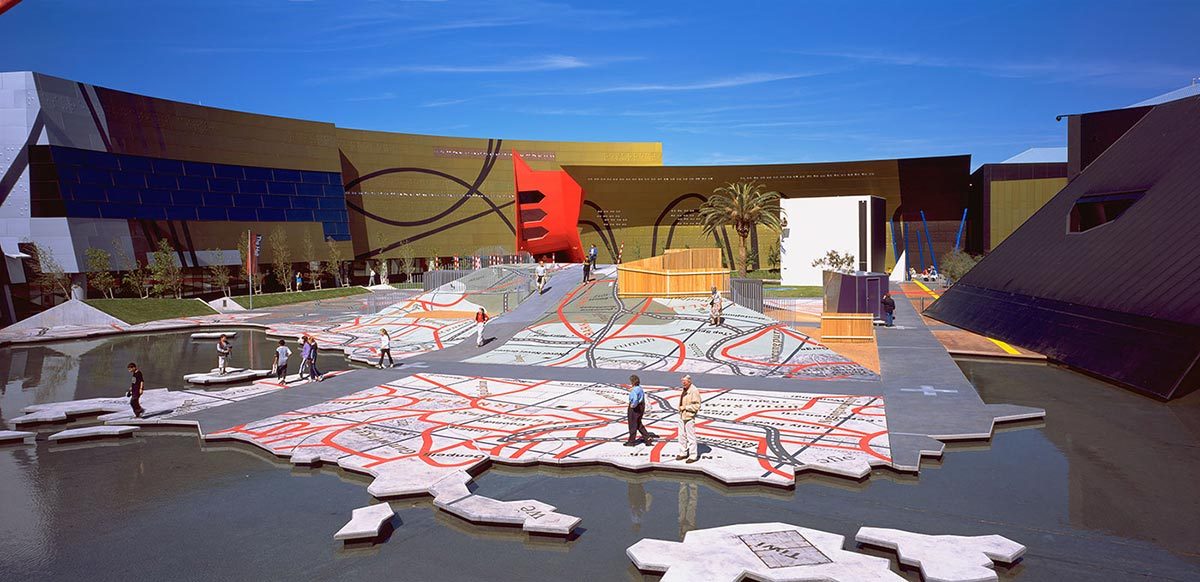
The National Museum’s Garden of Australian Dreams site of the new sound installation, Breathing Space. Photo: NMA.
Breathing Space connects spoken voices, choral songs, environmental field recordings, percussive accompaniments and composed music. With speakers discreetly distributed throughout the garden, the entire space quietly reverberates, emanating life.
It draws visitors into a reverie of place, a meditation on their own relationship to land and listening, and celebrates fragile ecologies – of species, language, country, culture.
“This is an important collaboration with Australian artists, and we funded this knowing we could give work and assistance to artists at such a difficult time,” Dr Trinca said.
Genevieve Lacey described her collaboration with the NMA as “the gift of a lifetime”.
“Breathing Space brings together ideas, sounds, people who have been central to my life for years,” she said.
“We’re rapt about the work and can’t wait to welcome people to enjoy it.”
She said the sound garden was inspired by texts by Waanyi Nation woman Alexis Wright – activist, author and documentary-maker from the highlands of the southern Gulf of Carpentaria.
“As they move around the GOAD, visitors will hear familiar and unfamiliar sounds: choruses of frogs and cicadas; the flutter of strings; percussive creaks and rattles; subterranean rumbles from the deep oceans; voices whispering, speaking and singing; and beautiful instrumental phrases, layered and abstracted into patterns,” she said.
Encircled by the NMA, it provides an opportunity for visitors to stop and reflect on the artistic exploration of “place” and “home”.
The project was developed over two years in collaboration with a team comprising writer Alexis Wright, artistic associate Ruth Little, audio designer Jim Atkins, technical manager Paul Lim and executive producer Martel Ollerenshaw.
Original Article published by Sally Hopman on Riotact.


